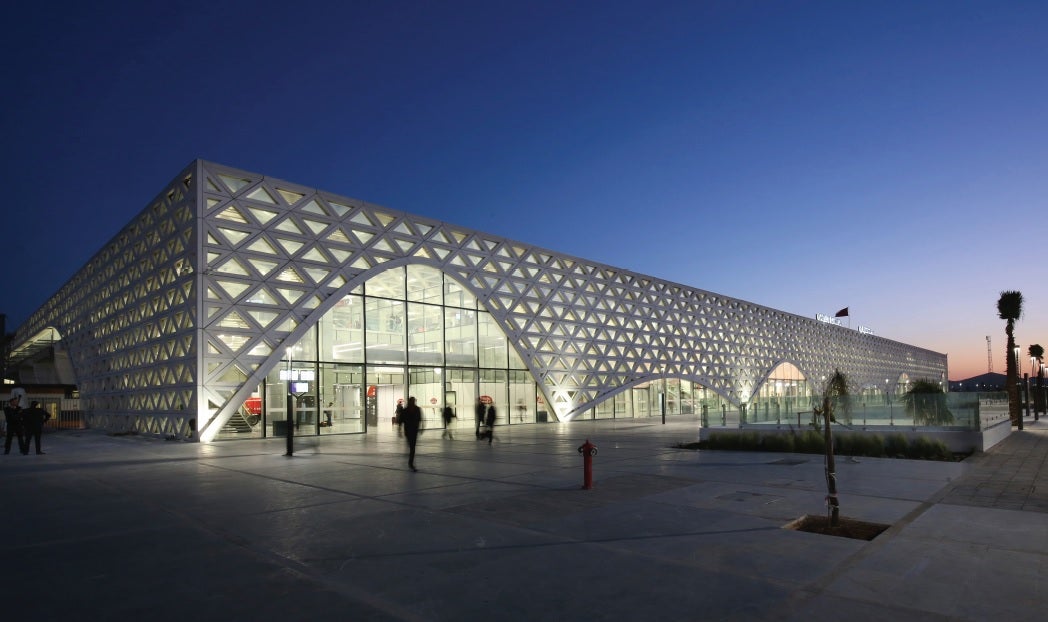
Many railway stations today are built with exceptional architectural design and style in mind. Aiming to recognise buildings leading in design and architecture, the Prix Versailles celebrated the world’s most striking passenger stations and rewarded two stations with special prizes.
While the Prix Versailles award was given to Yangcheng Lake Tourist Transportation Center located in Suzhou, China, the special prizes for internal and external architecture were given to Montpellier Sud de France and Kenitra train station respectively.
Having included the passenger stations category for the first time since the award ceremony commenced in 2015, the Prix Versailles took place on 12 September 2019 at the UNESCO headquarters.
The criteria used to single out the two projects from across the world encompass a variety of qualities including innovation, creativity, a reflection of local, natural and cultural heritage, the material being used and energy efficiency, as well as the values of social interaction.
The other railway stations which reached the selection stage in this category included Helix Cruise Center in Barcelona, Rabat-Agdal Train Station and Tanger-Ville Train Station both located in Morocco.
Futuristic shapes combined with sustainable materials and enhanced passenger flow are some of the many revolutionary architectural models that can be seen in both the stations. We take a tour around both the winning stations to get a glimpse of their design expertise.
How well do you really know your competitors?
Access the most comprehensive Company Profiles on the market, powered by GlobalData. Save hours of research. Gain competitive edge.

Thank you!
Your download email will arrive shortly
Not ready to buy yet? Download a free sample
We are confident about the unique quality of our Company Profiles. However, we want you to make the most beneficial decision for your business, so we offer a free sample that you can download by submitting the below form
By GlobalDataMontpellier Sud-de-France
The Montpellier Sud-de-France – also called the Montpellier-Odysseum station or La Mogère station – won the Prix Versailles award for the best internal architecture and design and for good reason.
Located on the Nîmes and Montpellier bypass in the Odysséum district of Montpellier – the city’s pleated-concrete and glass Montpellier Sud-de-France TGV station was designed by French architect Marc Mimram and constructed by the François Fondeville Group.
Having opened in mid-2018, the construction of the train station saw travel time to Paris Gare de Lyon cut to three hours. Trains from the Montpellier Sud-de-France station also run to Barcelona and to Madrid making the location increasingly accessible.
Costing €70m, the 6,500m square station is designed as a bridge over the new railway line.
With an openwork pattern of 10,000 glazed openings, the station is structured out of an assembly of 115 folded, curved fins on the roof, and is divided into five domes.
The roof of the station is made of ultra-high performance fibre-reinforced concrete (UHPFRC) – a modern composite material with mechanical characteristics which make it stronger than conventional concrete. Made with high-strength steel fibres, fine sand, cement, fly ash, a large volume of steel foil, this concrete is conducive to high ductility, low permeability, high strength capacity in compression and increased toughness.
Kenitra Train station
The railway station of the Moroccan city of Kenitra, north of Rabat, won the special prize for having the most striking exterior at the World Architecture and Design Award by Prix Versailles.
Designed by Paris-based design agency Silvio d’Ascia and Moroccan firm Omar Kobbité Architectes, the station opened in November 2018 and was built as a transit hub for Morocco’s high-speed rail through Kenitra connecting the capital of Morocco to Casablanca and Tangiers.
Costing approximately MAD400m the station is fitted with state-of-the-art technology which meets international standards in terms of safety, security, and quality of services.
With a metal latticework on the outside due to its undulating façade openings and geometrical cut-outs, the station has a significant presence in the city.
Part building and part pedestrian causeway, the Kenitra station links the Eastern and Western neighbourhoods which are currently divided by railway lines. Its close proximity to the historical city centre of Kenitra as well as the university district simplifies navigation between the station and adjacent areas for residents and passengers.
Forming an L-shape over the rail tracks, the structure incorporates two main levels for passenger and public services, in addition to a variety of mechanical zones. Deriving inspiration from the local heritage, the building utilises design strategies to naturally ventilate most parts of its interior through its structure.







